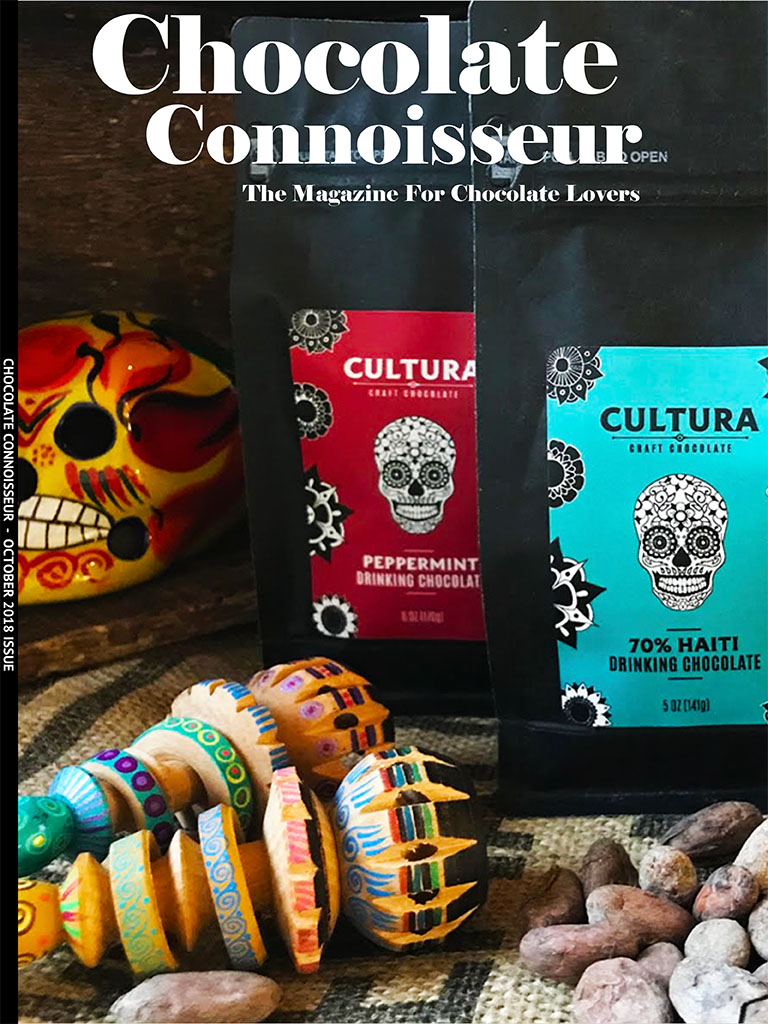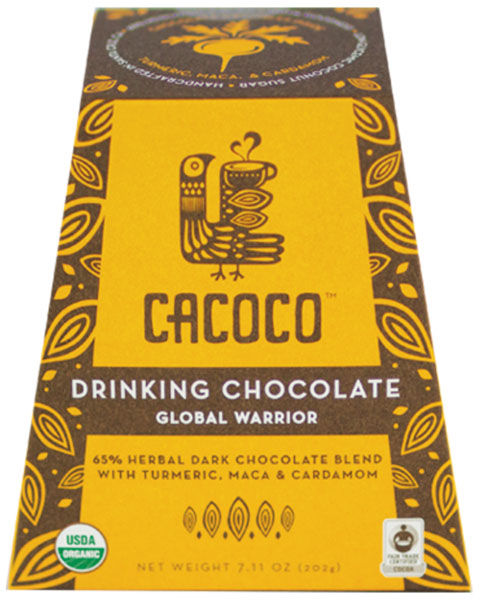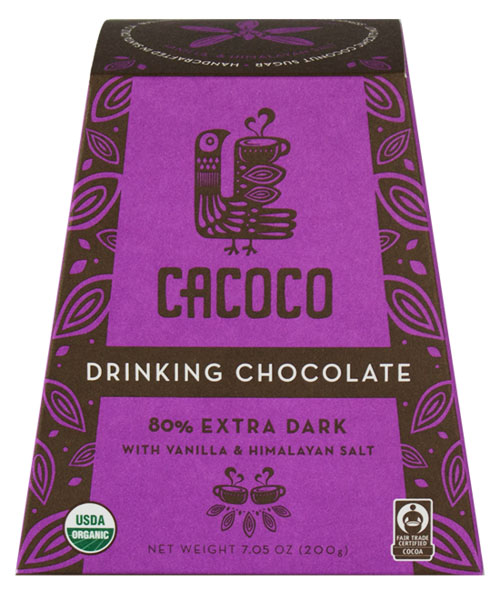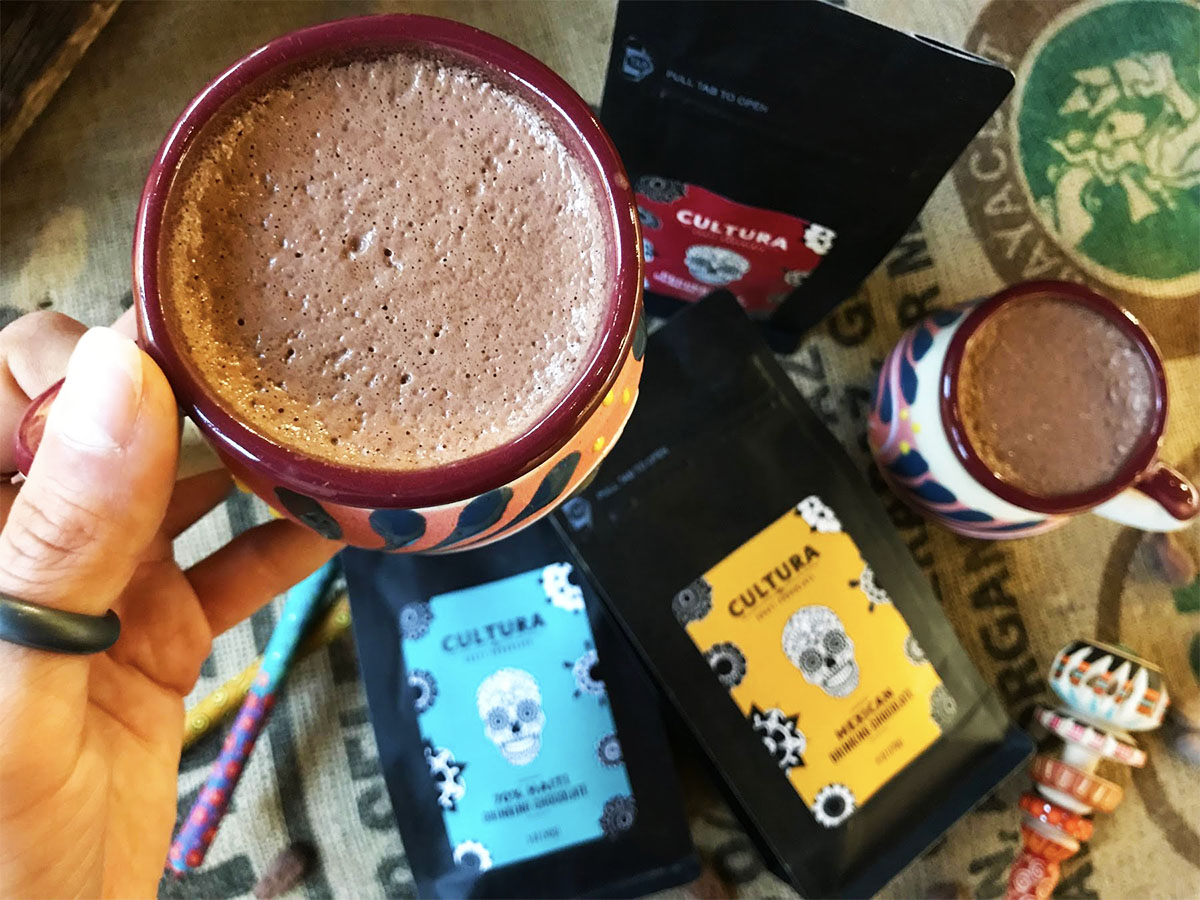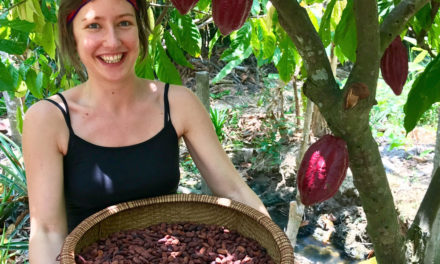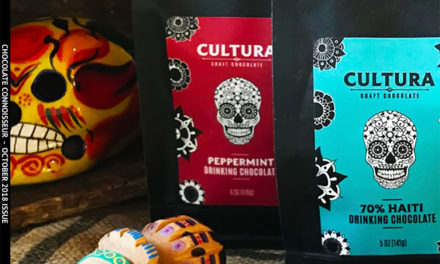with Victoria Cooksey
The Drinking Chocolate Spectrum
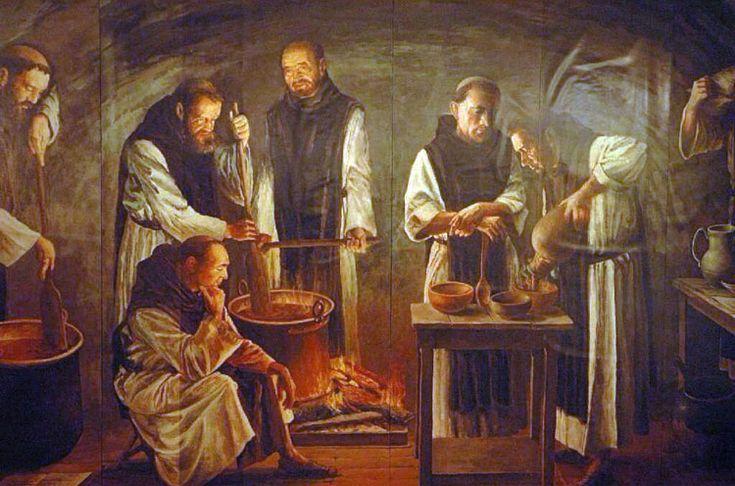
Spanish Monks making chocolate…
Her favorite drinking chocolate at court was made with almonds and orange blossoms from her garden. It calmed the nerves and was good for all stomach ailments. I’d like to see drinking chocolate become more fashionable again. Especially if you are not a chocolate maker, it is a way to experiment with chocolate in the kitchen.
Adding florals, herbs, spices and different milks or even water are an easy way to become creative with chocolate without having to go to culinary school. Just make sure to use the best ingredients!
Lilla Toth-Tatai, Little Beetle Chocolate (pictured here): I think Golden Milk inspired hot chocolates were a big hit this year. Either with white or milk chocolate. I made it a few times during the winter too.
Also more and more people are trying vegan versions either using water or alternative milks such as nut milks or rice milk. I’ve been experimenting with these as well but most of them alter the taste of the drink so you need to choose carefully.
During this summer, I’ve seen a lot of posts about hot chocolate frappes or iced hot chocolate drinks which can be a great alternatives to the hot beverage but still delivering amazing flavours.
Bottled chocolate milks are also trendy. I’ve seen some British makers (Pump Street and Land) team up with dairy companies to bring back this retro beverage in a higher quality version.
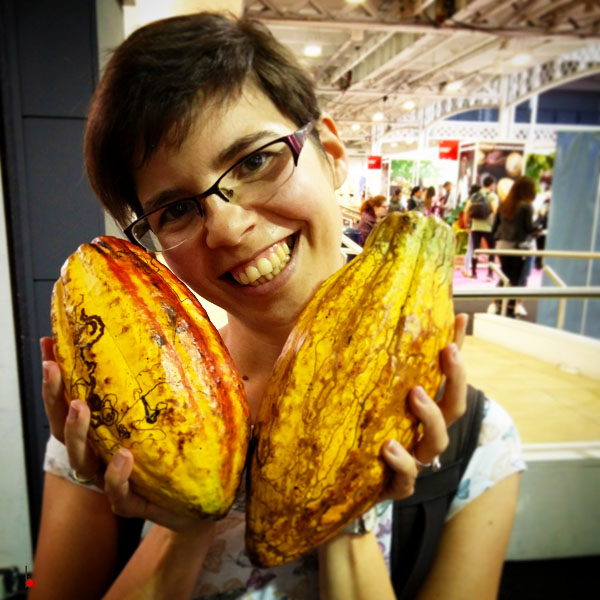
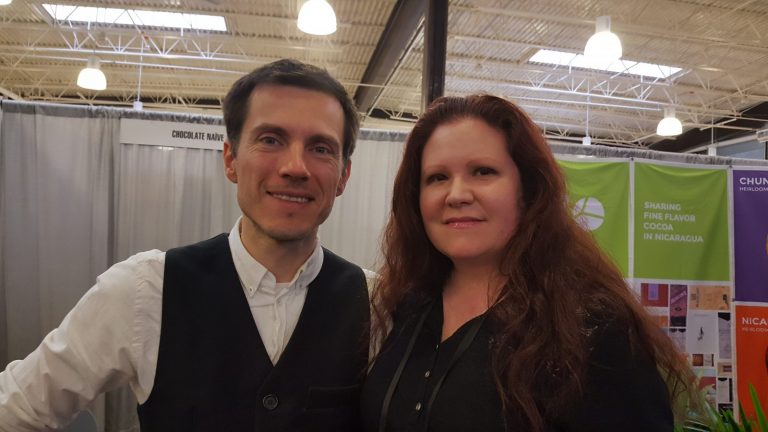
Domantas Uzpalis & Victoria Cooksey, 2017 Northwest Chocolate Festival
Every chocolate producer can testify that the chocolate tastes best when it’s in warm and liquid state (in the grinder).
It’s just some kind of connection between the warm and dense hot chocolate and human pleasure centers.
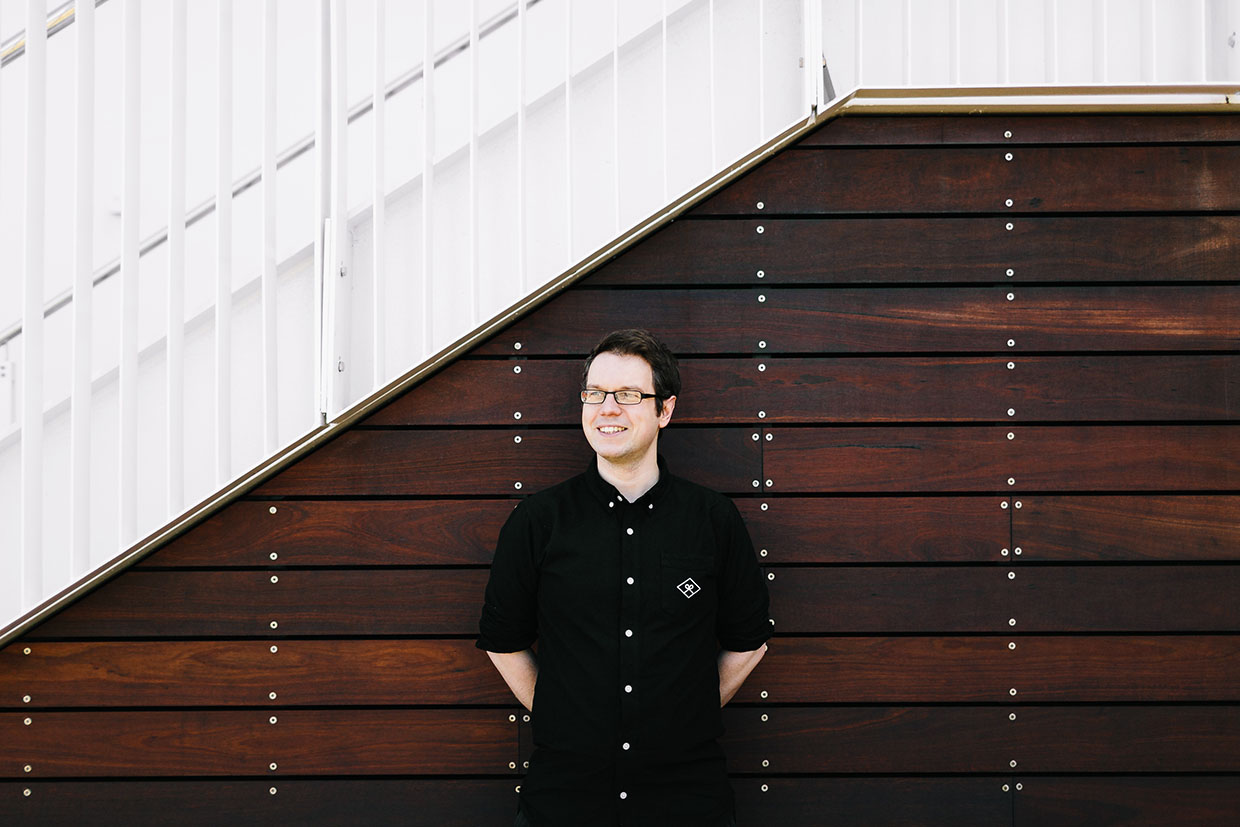
Luke Owen Smith of The Chocolate Bar
CACOCO – A Chocolate Connoisseur Favorite
If the pre-made drinking chocolate is chocolate shavings, then obviously you get the same thing as when you melt down bars (it is worth checking the price difference, because sometimes you get more chocolate if you buy the shavings then if you buy a bar). It is also interesting to play around with different blends when I have several different samples that would be too small on their own to make a cup of hot chocolate.
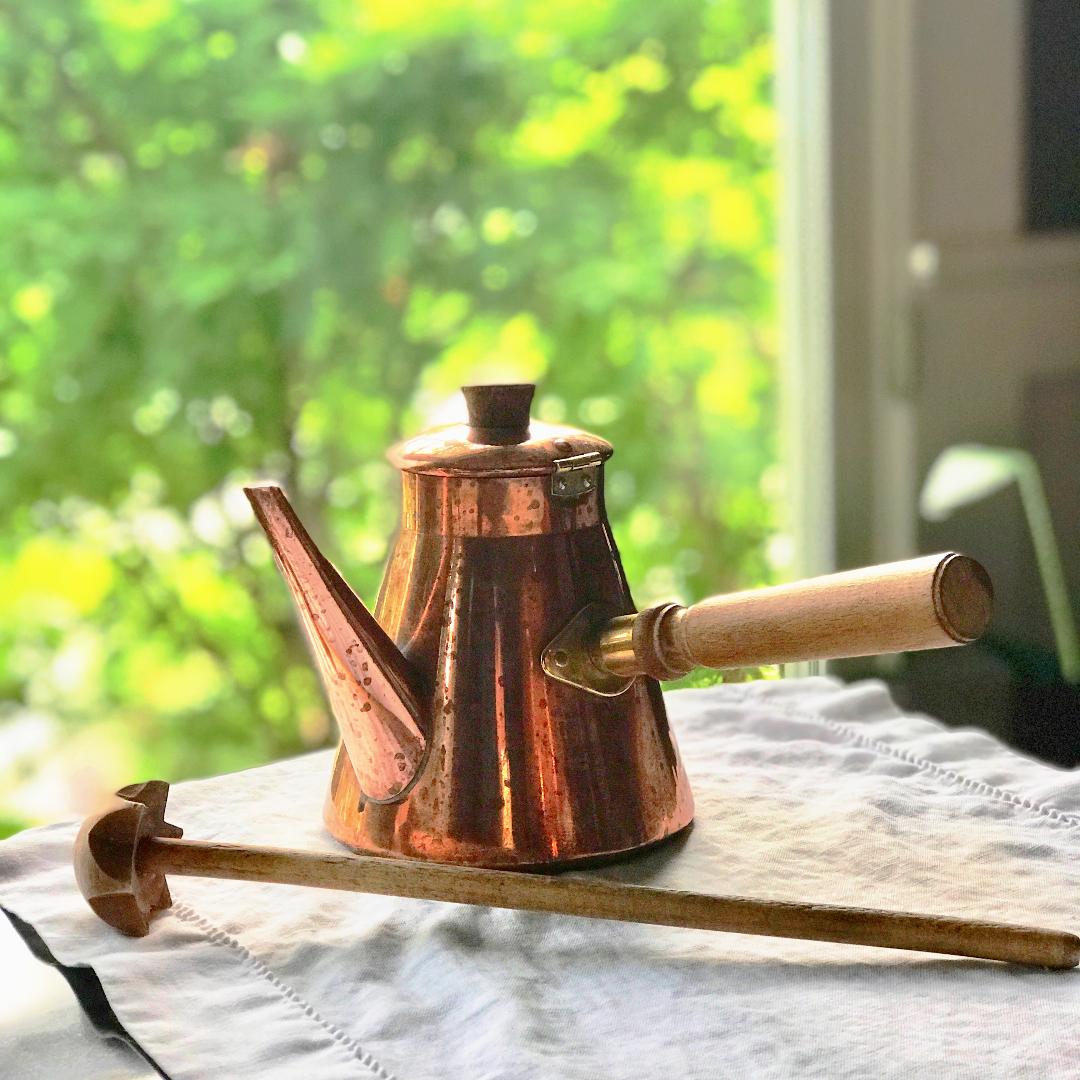

The one and only Sophia Rea
For breakfast, which by they way was considered healthy for all children to do up until the mid-century, for an afternoon break or even in the middle of the night, as long as there is a calming addition of chamomile or orange blossom.
In the summertime, add ice and horchata (a Mexican rice drink) or add to a smoothie and you can drink chocolate all day! A smaller cup is my ideal because it goes with my preference to be served hot and before the meal. Also, the smaller size cup keeps the chocolate warm longer.
I use antique demitasse cups from the 1920’s and modern Mexican chocolate cups. Some people prefer a drinking experience with a cappuccino cup or mug and if that creates a feeling of comfort and familiarity then be all means go ahead!
Years of Drinking Chocolate's Existence
Or click here to save BIG and pick up an Annual Subscription today!
And for more on Luke, Sophia, Domantas, and Lilla, please visit them via the links below, and a big thank you to all four of them for sharing their knowledge with us for this article!
Luke Owens Smith
The Chocolate Bar
Sophia Rea
Projet Chocolat
Domantas Uzpalis
Chocolate Naïve
Lilla Toth-Tatai
Little Beetle Chocolates

